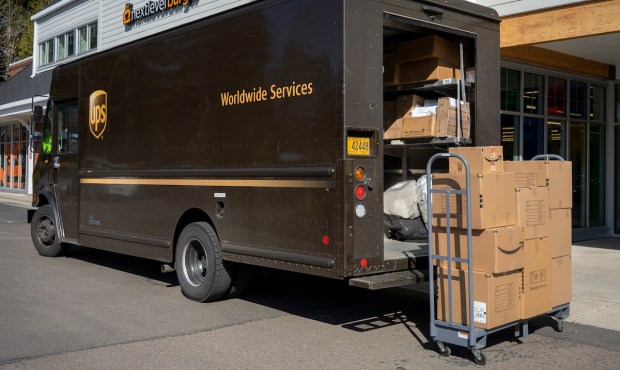UPS Volume Pressures Point to Amazon’s Success With Ecosystem Buildout

The pressures confronting UPS may point to wider seismic shifts with eCommerce and the last mile.
As the shipping giant gears up for a restructuring and layoffs, it may be Amazon that benefits, having made inroads with its efforts to cement fulfillment services with merchants and third-party sellers.
UPS will cut 12,000 positions, equating to a bit less than 3% of its global workforce. CEO Carole Tomé said during the company’s most recent earnings report that 2023 was “difficult.” Average daily domestic shipping volumes dropped 7.4% in the U.S. and 8.3% internationally.
eCommerce was mentioned on the call only one time, as Chief Financial Officer Brian Newman said that in international air freight, “overall volumes were down despite a mid-quarter spike in eCommerce.”
Small- to medium-sized businesses (SMBs) made up nearly 29% of the company’s total U.S. volume, an increase of 0.6%. Part of this growth came from the company’s Digital Access Program, where sales were up 22% to $2.9 billion. The program includes a suite of order management, fulfillment and delivery options available to merchant customers.
Amazon’s Impact
Management noted on the earnings call that in the U.S., the projected small package market growth rate is just under 1%, excluding Amazon.
We’ll know more when Amazon reports earnings Thursday evening (Feb. 1). Services metrics, including fulfillment, will be important line items to watch.
UPS’s filing with the Securities and Exchange Commission for the latest year has yet to be released. But in that document, we’ll see the revenue contribution Amazon-related business will have made. In 2022, the contribution was about 11% of UPS’s top line, down from a bit more than 13% in the previous year.
Amazon has been making the pivot away from carriers such as UPS, building out its own logistics operations and fulfillment efforts as it expands beyond the confines of its platform and grows its ecosystem.
By way of example, Buy with Prime lets merchants sell products directly from their websites. Through the service, Amazon’s payments and fulfillment services are available to buyers at checkout, letting shoppers use their Prime membership to opt for faster delivery,
PYMNTS Intelligence found that heading into the holiday shopping season and the fourth quarter — where UPS this week reported its pressures on volumes — Amazon’s eCommerce sales share in the U.S. increased from 48% in Q3 2022 to 53% in Q3 2023. The company’s overall share of retail spend at the end of the third quarter came in at 8.2%, up from more than 7% in the preceding quarter and above the roughly 4% seen just before the pandemic.
As smaller firms consider how and when to diversify their shipping relationships, and as eCommerce continues to be a mainstay of commerce, having the direct relationship along with the Buy with Prime button may help shift volumes to Amazon.
The battle is only going to get more intense.

